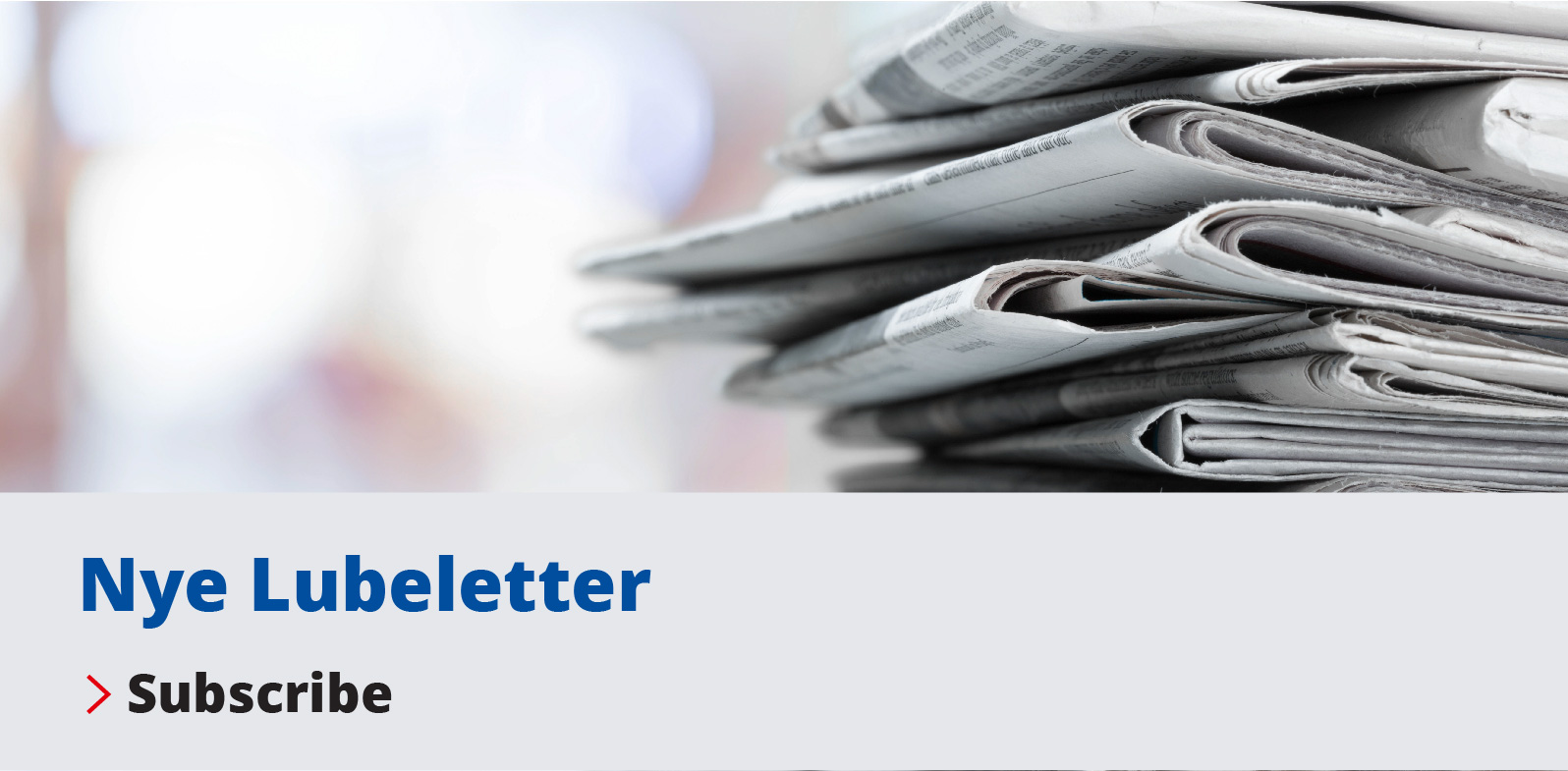New Lab for In-Vacuum Testing
Measure twice, cut once. This old proverb often echoes in our heads prior to cutting an expensive piece of material. In the high-risk world of an Aerospace Engineer, this double-check mentality is critical because once a mission is launched it is often impossible to repair failed components. Engineers often do not know how a lubricant will interface with an aerospace design until it has been tested in a vacuum environment under specific operating conditions such as temperature, speed, stress and load.
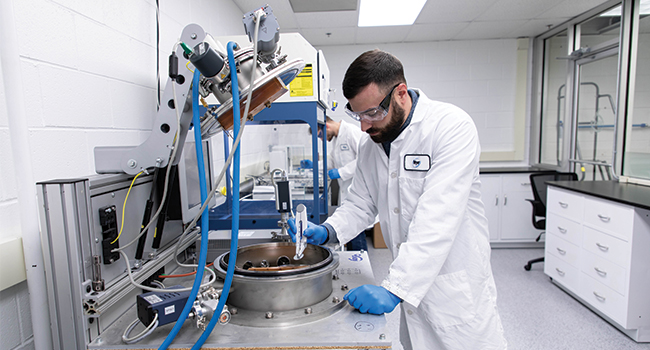
By nature, in-vacuum testing is difficult as testing mechanisms are extremely sensitive to factors such as vibration and static. For instance, something as small as static discharge from a person’s body can skew test results. Nye recently opened the new Vacuum, Aerospace, and Semiconductor Testing (VAST) Laboratory. The lab was designed specifically to minimize noise, foot-traffic, and static with features such as wall to wall Electro-Static Discharge Flooring, laminar flow sample prep hoods, and 6 and 7 digit microbalances for precise sample measurement.
In this Lab, one of a kind test apparatus designed and built by Nye engineers, along with other state-of-the-art test rigs, expose lubricants and aerospace components to extreme test conditions that mirror the encounters in an aerospace environment. Here are some of the testing capabilities offered in the new VAST Lab:
ASTM E595
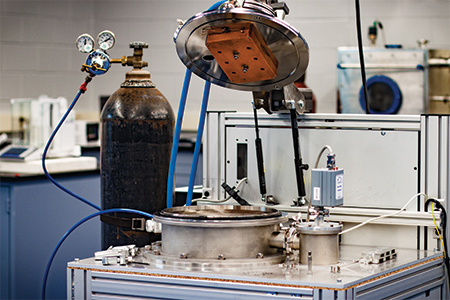
Nye outgassing testing (per ASTM E595 Vacuum Stability) is designed to screen materials for volatile contamination. This test provides percent Total Mass Loss and percent Collected Volatile Condensable Materials (CVCM) data for our lubricants. Nye engineers can modify the test to run at longer periods of time, different temperatures, and monitor the outgassing via Residual Gas Analysis. This testing provides customers with a better understanding of the stability of our materials in a static vacuum environment and identifying what materials are outgassing. Additionally, this test can show how much of the outgassing is condensable to give an indication of the lubricant’s material suitability within sensitive mechanisms in a vacuum environment.
Spiral Orbit Tribometer
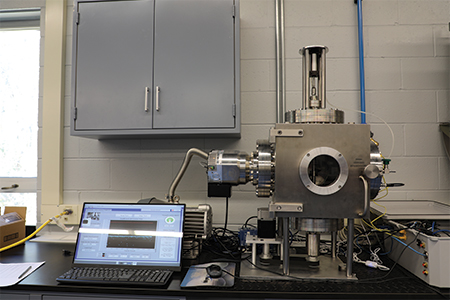
The Spiral Orbit Tribometer (SOT) is a method of tribometry designed to bridge the gap between tribo-contact testing and longer-term bearing tests. The SOT produces relative lifetime calculations based on the number of orbits made below a friction level which is normalized to the amount of lubricant on the ball bearing. The testing is a simulation of a thrust bearing and provides results that indicate the lubricant consumption, degradation, and life. As this test is done in high vacuum and the materials in contact can be customized, the SOT can provide a great deal of insight into the performance of mission-critical lubricants.
Knudsen Vapor Pressure Chambers
The term used to associate a material’s “willingness” to outgas, is known as the material’s vapor pressure (VP). VP is defined as the pressure exerted by a vapor in thermodynamic equilibrium with its condensed phases at a given temperature in a closed system. The higher a material’s VP, the more likely it is to outgas at pressures nearing atmospheric. Therefore, it is essential that all materials used in semiconductor, in-vacuum, and aerospace possess low vapor pressures to ensure that they will be able to endure low pressure environments without outgassing and contaminating the surrounding surfaces and environment.
Nye Lubricants employs the Knudsen method of determining the VP of lubricants. This method requires a very small sample, which reduces testing costs and increases testing efficiency. The sample is placed in a small, capped cell with an orifice in the cap of known diameter. The cell (containing lubricant) is then placed in one of the vacuum chambers, at a desired temperature and for a desired duration. The mass loss from the lubricant within the cell, is then placed into the Knudsen equation, along with the other known variables of temperature and time, to calculate the Knudsen VP of that material at that particular temperature.
Vacuum Bearing Test Rig
The Vacuum Bearing Test rig will offer engineers data that can be used to determine the realistic life expectancy of our lubricants test on angular contact bearings in high vacuum environments. This rig can support customer supplied bearings to simulate how a lubricant will perform in a specific application. Our high vacuum test can assess how our lubricants will perform at temperatures up to 200°C and determine mass loss under specific operating conditions. The rig also uses electrical resistance across the bearing to determine which lubrication regime (boundary, mixed or elasto-hydrodynamic) our products qualify under, given the test parameters.
In the future, Nye plans to extend testing capabilities by adding a second SOT with thermal capabilities, and a Vacuum 4-Ball Wear apparatus. Using the obtained test results, we can provide our customers a more precise assessment of how our lubricants will perform in their applications. Additionally, this new testing lab will provide us with more accurate readings to help Nye chemists and engineers design the next generation of aerospace and semiconductor lubricants.
Download our Test Before You Launch brochure to learn more about our Aerospace testing capabilities.
 William Galary – Senior Technical Products Engineer
William Galary – Senior Technical Products Engineer
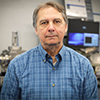 William Galary has been with Nye for nearly 45 years serving in a multitude of roles including Ultrafiltration Manager, Lab Manager, Senior Technologist, and now Senior Technical Products Engineer. In his current position, William provides technical solutions that address challenges our customers may have in choosing the right lubricant for their application. William specializes in the filtration of lubricants and attended the University of Massachusetts Amherst.
William Galary has been with Nye for nearly 45 years serving in a multitude of roles including Ultrafiltration Manager, Lab Manager, Senior Technologist, and now Senior Technical Products Engineer. In his current position, William provides technical solutions that address challenges our customers may have in choosing the right lubricant for their application. William specializes in the filtration of lubricants and attended the University of Massachusetts Amherst.


